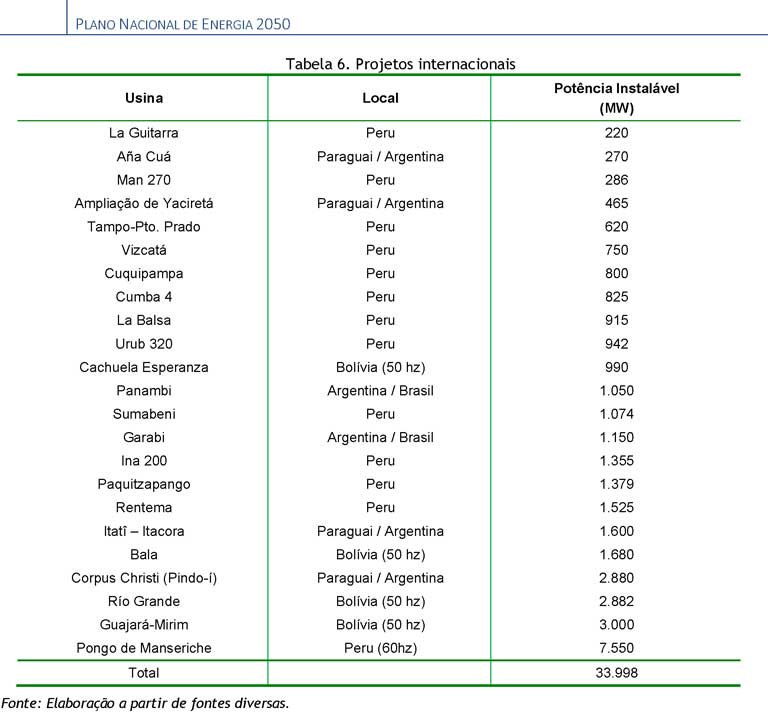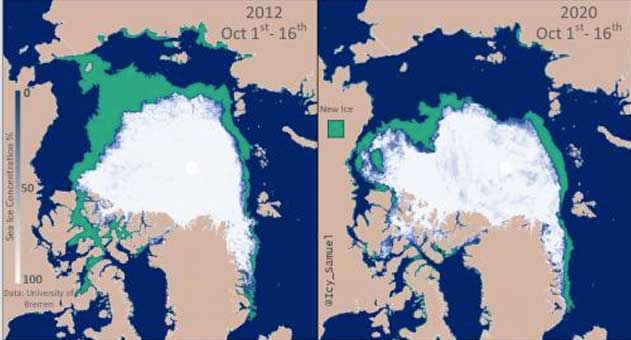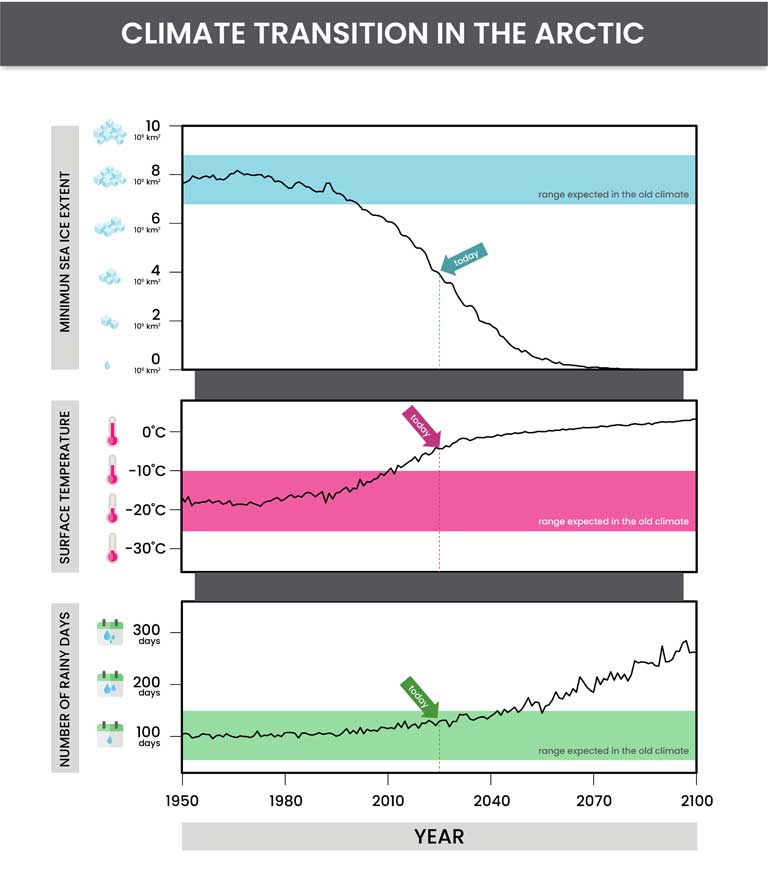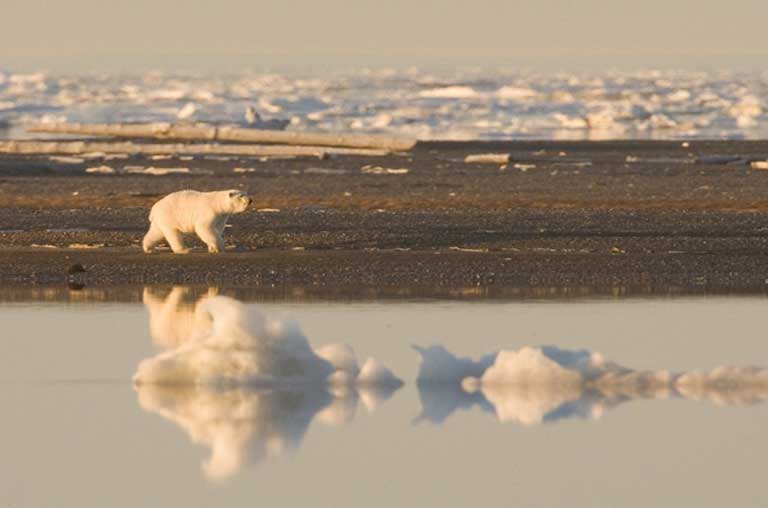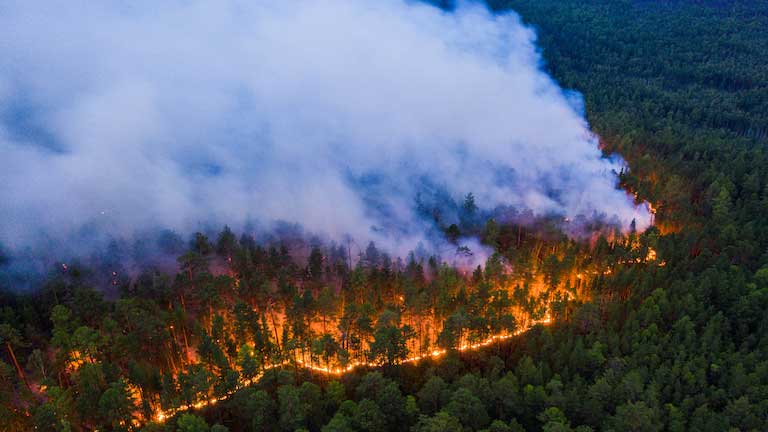Long entrenched Brazilian military mindset is key to Amazon policy: Expertby Peter Speetjens on 26 October 2020
According to academic Joao Roberto Martins Filho, an expert on the Brazilian armed forces, the military traditionally sees itself as the “protectors of the Amazon.” For his research, Martins Filho talked to soldiers, officers, and even generals, whose views were very consistent.
President Bolsonaro has included 6,000 former and current military personnel in his administration, including the VP, who heads the new Amazon Council. Bolsonaro needs military support to shield him from international criticism and to secure reelection, says the expert.
A chief Brazilian military view, according to Martins Filho, judges Indigenous people as obstacles to progress and “savages” in need of civilizing. Amazon foreign intervention is also feared, explaining a national security-driven desire to extend a highway to Brazil’s northern border.
Interestingly, in a previously secret 1986 document, Brazil’s military warned about the grave consequences of Amazon deforestation, stating that massive tree loss would lead to a reduction in rainfall, changing river flows, soil erosion, siltation of rivers and bringing climate change.

Brazilian Vice President and leader of Jair Bolsonaro’s newly formed Amazon Council, Hamilton Mourão. The VP has no environmental credentials but served as the military commander over the Amazon region for five years. Image by Gabriel Cruz on flickr.
The media portrayal of Brazil’s annual fire season — which in 2020 is trending worse than in 2019 — is “surreal” according to the country’s vice-president, Hamilton Mourão, who spoke during a web seminar on 27 August. Not flames and deforestation, but “development” is the biggest challenge ahead for the Amazon, the VP said then.
“The Brazilian state is not present in the Amazon,” the former general told the Wall Street Journal one week later. “That is why illegality thrives.” Yet, an enhanced government presence alone is not a solution, he added. Only viable economic opportunities can end the poverty which, according to the VP, is the root cause of environmental destruction there.
Mourão’s contention that “development” will save the rainforest may feel counterintuitive to outsiders and especially conservationists, but his words echo the intertwined policies of national “security and development” which have served as the cornerstones of the Brazilian armed forces’ vision for the Amazon for more than half a century.
And his words carry considerable weight: The 67-year-old VP was named head of the Conselho Nacional da Amazônia Legal (the National Council of the Amazon; CNAL) last January. Consisting predominantly of former military officers, this governmental super body is to “coordinate and supervise the implementation of all public policies related to the Amazon.”
CNAL is hardly the only public institution “militarized” during the watch of President Jair Bolsonaro, himself a former Army Captain. Research by Brazil’s Federal Audit Court shows that the current administration employs more than 6,000 active and former military personnel, by far the most since the end of the military dictatorship which ruled the country between 1964 and 1985.
Yet, despite this infusion of military high brass into the heart of the nation’s civil administration, “it is important to understand that the Bolsonaro government is not a military government,” cautioned Joao Roberto Martins Filho, professor of social sciences at the University of Sao Carlos and an expert on the role of the military in Brazilian politics. “It is a government leaning towards fascism, which is supported by the military, as it is supported by other factions. I don’t believe Bolsonaro is controlled by the military. It is much more ambiguous that that. He needs them and they need him.”
Vice President Hamilton Mourão (left) greets President Jair Bolsonaro — both of them, Brazilian military men. Photo credit: Palácio do Planalto on Visualhunt / CC BY-NC-SA
Inside the Amazonian elite
Joao Roberto Martins Filho offers an academic window into the Brazilian military mindset — and potentially the mindset defining the current administration. At first glance, he notes, the president and vice president could not seem more different. Bolsonaro, born in 1955 in a tiny village in the interior of Sāo Paolo state, is a populist who often addresses his core supporters in very crude terms.
Mourão, on the other hand, “is a product of the Amazonian elite,” Martins Filho told Mongabay in an exclusive interview. “This is something little talked about in Brazil, but his family continues to take up important positions in the state of Amazonas.” The VP also shies away from the limelight and tends to choose his words far more carefully than the chief executive.
During the early 20th century rubber boom, Mourão’s grandfather traveled from Recife in northeastern Brazil to Manaus deep in the Amazon, where he eventually became a judge. His grandmother was a plantation owner’s daughter of Indigenous descent. Mourão followed in the footsteps of his father, who served in the military, to become a general and commander of the nation’s South. Bolsonaro, never made it beyond the rank of captain.
However, the two leaders also share a similar, very conservative, worldview likely born out of the military dictatorship. Both, for example, refuse to perceive the 1964 military takeover as a coup. Both also openly have praised Colonel Carlos Alberto Ustra, the military regime’s chief torturer.
And maybe most critically, both view the Amazon rainforest first and foremost as Brazilian territory subject only to Brazilian sovereignty, that must be aggressively protected from national security threats — including foreign influence and invasion, whether by other countries or international NGOs.
Joao Roberto Martins Filho, University of Sao Carlos professor of social sciences and an expert on the military’s role in Brazilian politics. Image courtesy of Joao Roberto Martins Filho.
No surrender
“We have to be realistic about why Bolsonaro appointed Mourão head of CNAL,” Martins Filho said. “Bolsonaro’s policy for the Amazon has been one of destruction. He promised to destroy the mechanisms created to control deforestation, to not add one centimeter to the Indigenous territories, and to never reprimand a garimpeiro [artisanal gold miner]. And that is what he did. The problem is that his policy caused enormous international criticism, which could prove costly for Brazil.”
Last June, a group of important international investors threatened to withdraw their funding from Brazil if the government did not clean up its environmental act. Shortly after, 38 Brazilian firms and four business associations called upon CNAL for strong measures against deforestation. France and several other European countries have also signaled they will not ratify the EU Mercosur free trade agreement — the largest single global trade agreement ever negotiated, and vital to Brazil — unless Bolsonaro gives up his Amazon development plans.
“That’s why Bolsonaro called in the help of those who consider themselves the ‘Lords of the Amazon,’ which is the military,” explained Martins Filho. “The Brazilian armed forces see themselves as protectors of the Amazon. [And] Bolsonaro needs their support to shield him from international pressure, and of course for his own personal project: reelection.”
The conquest and colonization of the Brazilian Amazon has a long, often tragic history, which was brutally accelerated under the nation’s military dictatorship. In 1970, the military government launched the National Integration Plan (PIN) under the slogan “Integrar Para Não Entregar,” — integrate to not surrender.
The program oversaw the construction of thousands of miles of roads piercing the Amazon, including the TransAmazonian Highway — roads deemed necessary to protect Brazilian national security. Mining and agriculture were promoted in the rainforest and the first plans for major hydroelectric projects were drawn up. People from Brazil’s drought-stricken northeast were encouraged to resettle in the Amazon under the slogan: “Unite the people without land, with a land without people.”
But at that time, the Amazon, the alleged “land without people” was inhabited by many thousands of Indigenous and traditional inhabitants, who were shoved aside, uprooted, and even killed when they resisted resettlement by the military. 
A column of tanks in a show of power along the streets of Rio de Janeiro in April 1968, during the Brazilian Military Dictatorship. Image by Correio da Manhã in the Public Domain.
The French Connection
“The military perceived the Amazon as an empty space that needed protection, as an empty space that can easily be infiltrated” by outsiders Martins Filho explained. “But obviously there is a problem with this logic, as the Amazon is home to multiple Indigenous peoples.”
Many Indigenous people revolted against the military regime’s development efforts on their lands. Often with bloody consequences. The National Truth Commission report issued in December 2014 estimated that the Brazilian army killed at least 8,350 Indigenous people during the dictatorship.
“Over the years I have spent a lot of time with the military,” said Martins Filho. “I’ve talked to soldiers, officers, brigadiers and generals. And I’ve always been stunned at how rudimentary their thinking is. To them the Indigenous [person] is still a savage who needs civilizing and is an obstacle to progress.
“The military sees the Indigenous as a threat to Brazilian sovereignty,” he added. They fear that “Their territories, with [the] help of the international community, could one day become independent. This is madness of course, but it is what they believe until this very day.”
France plays a surprising role as villain in this distrustful scenario. It was former French president François Mitterand who in 1989 first launched the concept of the internationalization of the rainforest by suggesting: “Brazil must accept relative sovereignty over the Amazon.” Adding to that national security concern is the presence of French Guyana on Brazil’s northern border — from which a French incursion might be launched.
“This sounds unbelievable,” said Martins Filho. “But ask members of the Brazilian armed forces if France could intervene in the Amazon and 99% will say yes.”
This mindset helps explain Bolsonaro’s move shortly after taking office of reviving a plan of the military dictatorship to extend the BR-163 highway north from the Amazon River, hundreds of miles through undisturbed rainforest, to the nation’s northern border, likely as a means of assuring the quick deployment of troops. 
The plan to extend the BR-163 highway to the border with Suriname was originally drawn up by the Brazilian military dictatorship in the 1970s and has since been revived by President Jair Bolsonaro. Image by Júlia Lima.
Calha Norte
In the 1970s, the military’s protective Amazon policy was an integral element of the country’s National Security Doctrine (NSD), which consisted of two major parts: internal and external security, coupled with economic development.
“In the early 1970s, there was still a real concern for a surge of leftwing guerillas,” Martins Filho explained. “Once this had been contained, and the Brazilian left became a democratic movement, the focus shifted to the frontiers. The military feared problems with Guyana, Columbia and potentially Cuba. This played a role throughout the Cold War. Once the Cold War was over, the main question became: How do we react when one day a foreign power invades the Amazon?“
Unlike in Chile and Argentina, Brazil’s dictatorship did not come to an abrupt end, severing past policies. Instead, the military authorities carefully planned a transition back to civilian rule. That included a policy for the Amazon known as the Projeto Calha Norte (PCN): a plan for “development and security in the region north of the Solimões and Amazon rivers.”
In order to better protect the region between the two rivers, and all the way to Brazil’s northernmost border, the PCN called for an increased state presence there, strengthened by border posts, better infrastructure and economic development.
That plan, an initiative of the National Security Council (NSC), was formulated by a multi-ministerial team and embraced by José Sarney, Brazil’s first civil president after 21 years of military rule.
“The most interesting aspect of the PCN is a formerly secret document from 1986, in which NSC for the first time ever warns of the grave consequences of deforestation in the Amazon,” said Martins Filho. “It states that deforestation will lead to a reduction in rainfall, changing river flows, large scale soil erosion, siltation of rivers and climate change.
“So, trained in discovering threats to the country, the military actually admitted that deforestation will have negative consequences for the whole of Brazil,” Martins Filho added. “The position they took later on was to negate all ecological issues related to Amazonia. But we now have this document, which clearly states otherwise.”

The area across which the proposed extension of the BR-163 Highway will cut is a rich patchwork of conservation units and traditional territories; 40% of the species that live there are found nowhere else on Earth. Image by Júlia Lima.
Good cop, bad cop, same cop
The PCN is of extreme importance to Amazon policy in Brazil today. One of the first things Bolsonaro did following his presidential inauguration was to approve R $150 million (US $40m) for the Ministry of Defense, mostly going to its PCN department.
Three weeks after Bolsonaro’s inauguration, former general Maynard Marques de Santa Rosa launched the Barão do Rio Branco project. In line with the PCN, it proposes the construction of a very expensive bridge across the Amazon River, the building of a power plant north of the river, and the extension of the BR-163 highway to Brazil’s northern border with Suriname.
A PowerPoint presentation related to the project obtained by Open Democracy states: “Calha Norte must be implemented in the Amazon basin to integrate it with the rest of the national territory in order to fight off international pressure for the implementation of the project called Triple A.” The so-called Andes–Amazon–Atlantic project, or “Triple A” is an international proposal to create an ecological corridor in the northern Amazon — and, according to conservationists, has nothing to do with a challenge to Brazilian sovereignty.
Advocates of the Rio Branco Project have warned of a “globalist threat” to the Amazon, pointing variously to the perceived French threat, the increased recent Chinese presence in Suriname, along with international socioenvironmental NGOs operating through local allies, including Indigenous and traditional communities, and quilombos — communities composed of the descendants of runaway slaves.
All indications are that Vice President Mourão is military old school, and always considering Amazon development within the context of Brazilian national security and sovereignty. As part of that framework, the VP supports Bolsonaro’s plan to hand landgrabbers legal deeds to land often claimed by traditional communities, showing that these military men are willing to reward what was obtained illegally to develop the region.
On examining the current Brazilian power structure, Mourão may seem the more reasoned of the two leaders. Yet, he is very much pedaling in the same direction as his seemingly less sophisticated presidential counterpart. Martins Filho concludes: “If ever Mourão were to take over as president, I don’t think his policies would be very different from Bolsonaro’s.”
Banner image: Commodities on the move on the completed southern section of the BR-163 Highway. A planned extension of the BR-163 could result in major new deforestation along a 300-mile corridor stretching north from the Amazon River to the Suriname border. Image by Roosevelt Pinheiro courtesy of Agência Brasil.












